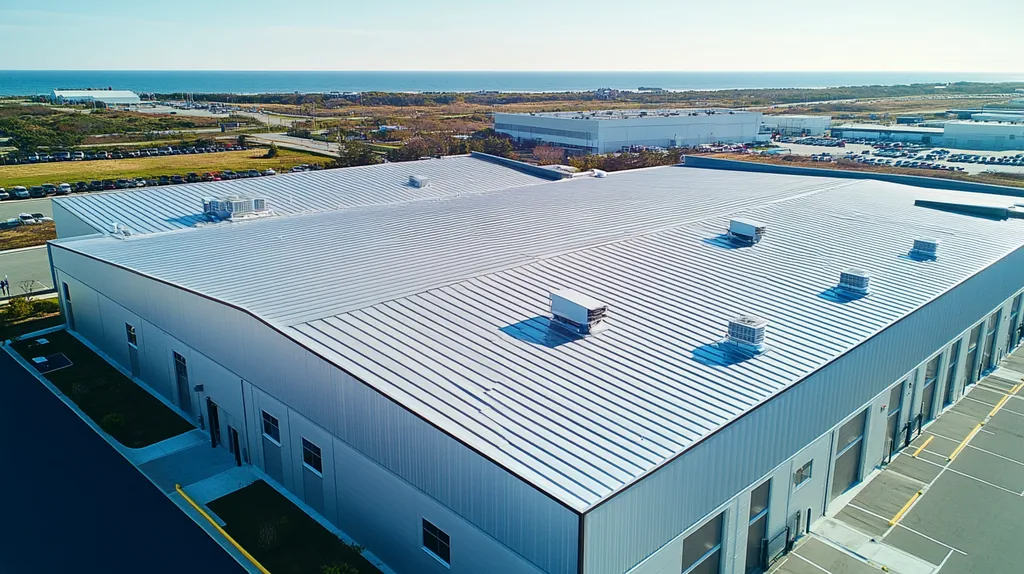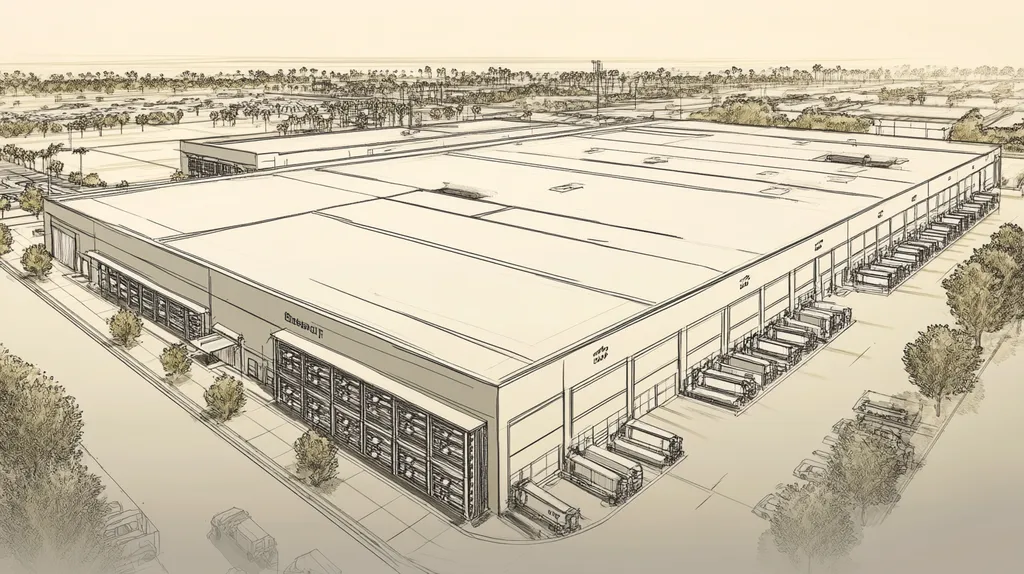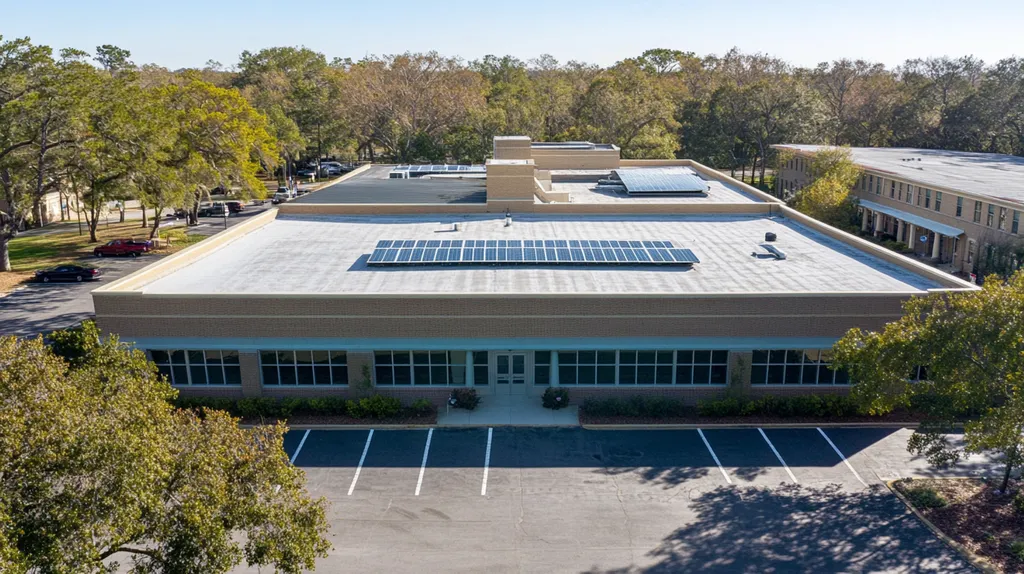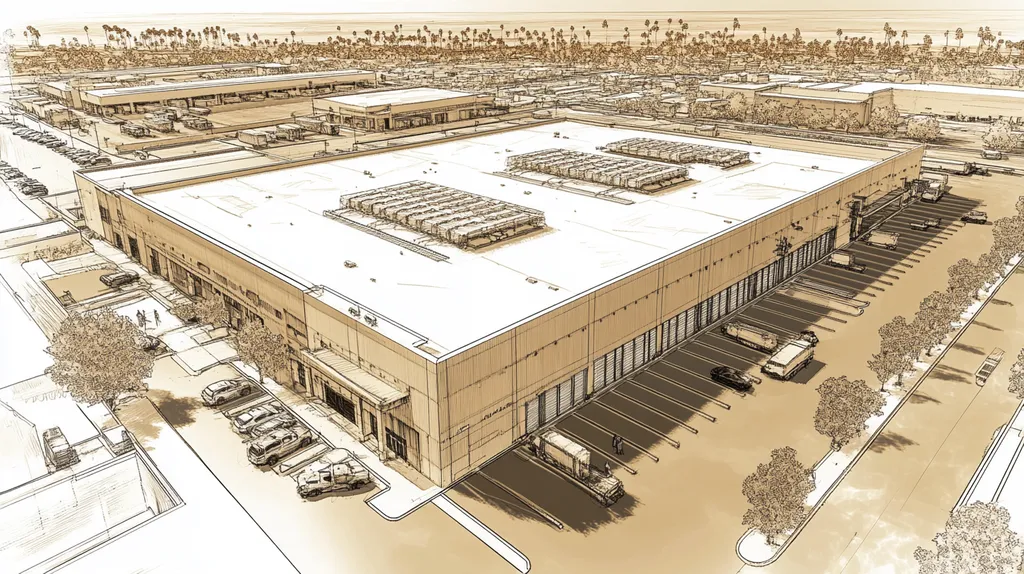Every year, commercial facilities lose millions of dollars to pest-related damage caused by improperly maintained gutters and downspouts. Industry studies show that over 60% of roof deterioration stems from water damage and pest infestations linked to clogged drainage systems.
For facility managers, implementing proper gutter maintenance isn’t just about preventing leaks – it’s about protecting their entire building envelope from destructive pests that can compromise structural integrity and create health hazards.
This comprehensive guide examines critical factors in gutter system management, from performance metrics and financial considerations to compliance requirements and risk mitigation strategies that safeguard commercial properties.
SECTION 1: PERFORMANCE FACTORS
The performance of gutters and downspouts on commercial roofs is essential for preventing pest infestations and maintaining the integrity of the building. When gutters are improperly sized or poorly maintained, they can become a source of standing water, leading to a perfect breeding ground for pests such as mosquitoes. Alarmingly, a 2022 study revealed that more than 30% of facilities experienced pest issues directly linked to gutter problems. To combat these challenges, facility managers must prioritize gutter sizing, water flow capacity, and material durability.
Gutter and Downspout Sizing
Choosing the right size for gutters and downspouts is crucial to effectively direct rainwater away from the roof. Facility managers need to take into account the total roof area, the intensity of local rainfall, and the overall drainage design when selecting sizing. If gutters are too small, they can overflow, resulting in pooling water and attracting pests.
Larger roofs typically require wider gutters to handle the increased runoff, so a 10,000-square-foot roof might benefit from 6-inch gutters instead of the standard 5-inch option. Proper sizing significantly decreases the chance of blockages and helps maintain a smooth flow of water.
It’s equally important to conduct regular inspections to ensure gutters are free from debris. Accumulations of leaves, dirt, and grime can obstruct water flow, raising the risk of pest infestations. Proactive maintenance allows facility managers to address blockages before they become a larger issue.
Key Action Items
Water Flow Capacity
Gutters must be designed to handle high water flow capacity, particularly during heavy rainfall. This ensures excess water is efficiently channeled away, preventing overflow and subsequent pest issues. For commercial roofs, even small amounts of rain can generate significant runoff that needs to be managed effectively.
For instance, a 1,000-square-foot roof can produce up to 600 gallons of water from just one inch of rainfall. It’s critical for downspout systems to quickly and effectively manage this water. If not, stagnant water can form, creating an inviting environment for pests.
Additionally, incorporating extra downspouts can significantly improve water management. Evenly distributed downspouts help to prevent water pools from forming and prolong the life of the gutter system. Smart planning here can make a substantial difference in reducing pest risks.
Key Action Items
Material Durability
The materials chosen for gutters and downspouts are vital to their long-term durability and overall effectiveness. Opting for corrosion-resistant materials like aluminum or galvanized steel can significantly reduce maintenance needs and prolong lifespan. In contrast, using lower-quality materials can lead to rapid deterioration, resulting in leaks and blockages.
For example, while vinyl gutters may be budget-friendly, they are prone to warping and cracking over time, creating areas that retain moisture and can attract pests. Choosing durable materials is a smart investment that pays off in terms of both longevity and operational efficiency.
Regular assessments of gutter materials are important to spot potential weaknesses. By replacing corroded sections promptly, the integrity of the entire system can be preserved, ensuring it functions effectively against pest challenges.
Key Action Items
SECTION 2: FINANCIAL CONSIDERATIONS
Understanding the financial implications of gutters and downspouts is vital for facility managers seeking to prevent pest infestations. Ignoring proper installation and routine maintenance can lead to hefty costs. Reports indicate that property owners can incur expenses upwards of $10,000 annually from pest-related damage. This section will outline initial installation costs, ongoing maintenance expenses, and potential long-term savings from investing in pest-resistant gutter systems.
Initial Installation Costs
The initial costs of installing gutters and downspouts can vary significantly, depending on materials and design choices. Standard aluminum systems typically range from $5 to $10 per linear foot, while premium choices like stainless steel may cost over $20 per linear foot. These costs can escalate quickly for larger commercial buildings, demanding careful budgeting.
Investing in high-quality systems offers several advantages. For instance, seamless gutters reduce the number of joints where pests might hide and breed. When planning an installation, it’s essential to balance these upfront costs against the potential headaches of future pest control challenges.
In summary, making a focused investment in durable gutter systems is crucial for avoiding long-term pest issues. Facility managers should ensure that their installation budget aligns with their pest prevention strategies.
Key Action Items
Maintenance and Repair Expenses
Maintenance is a critical factor often overlooked in gutter system considerations. Regular inspections and cleanings may cost between $100 and $300 annually, based on the building’s size, location, and debris issues. This minor investment helps avoid more significant financial burdens down the line.
If gutters go unmaintained, they can overflow, creating stagnant water that attracts pests. Clogged gutters are notorious for leading to pest infestations, resulting in potential repair costs for roof damage or structural issues that could total thousands of dollars.
Investing in automated cleaning systems or guards may have a higher initial cost but can lead to savings on maintenance in the long run. By managing maintenance proactively, facility managers can steer clear of costly repairs associated with pest control measures.
Key Action Items
Long-Term Cost Savings
Investing in durable gutters and routine maintenance can offer substantial long-term savings. A pest-free environment not only boosts tenant satisfaction but also minimizes losses from pest-related damages and downtime. This is particularly important for businesses relying on maintaining a clean and safe reputation.
Research indicates that properties that take active measures against pest infestations can save between 10% to 20% on overall maintenance costs. Additional savings result from lowered energy expenses when systems function properly, as clogged gutters invite moisture issues and mold growth that inflate heating and cooling costs.
Furthermore, a well-maintained gutter system can extend the lifespan of the roof, decreasing the frequency and cost of replacements. Facility managers should incorporate these savings into their financial projections to strengthen their budgetary strategies.
Key Action Items
SECTION 3: COMPLIANCE REQUIREMENTS
Adhering to local building codes and industry standards is essential for maintaining effective gutter and downspout systems on commercial roofs. Failing to meet these regulations can lead to severe consequences, including pest infestations, property damage, and hefty fines. By understanding the specific requirements in their area, facility managers can better protect their buildings and minimize potential risks.
Local Building Codes
Local building codes specify requirements for gutter installations, encompassing size, materials, and maintenance. Many municipalities have regulations aimed at preventing water accumulation, which is a prime breeding ground for pests. Non-compliance can result in expensive penalties and unexpected repair expenses.
For instance, using unapproved materials may lead to fast deterioration, reducing gutter functionality and increasing the risk of water damage. Facility managers need to familiarize themselves with local guidelines to avoid these issues.
Regular consultation with local authorities can ensure compliance and help spot potential problems early. This proactive strategy protects both the property and the budget, making it vital for preventing pest-related obstacles.
Key Action Items
Industry Standards for Gutters
Following industry standards ensures that gutter systems effectively direct water away from the building, thus reducing potential pest habitats. Standards set by organizations like the American Society for Testing and Materials (ASTM) help define acceptable installation and material practices. Adhering to these guidelines not only enhances performance but also aids in longevity.
Using high-quality materials tailored for local climate conditions can greatly improve gutter durability. This choice minimizes maintenance concerns and the likelihood of pest problems. Opting for inferior solutions may lead to higher operational costs in the future due to inadequate functionality.
Training for staff and contractors on these standards is crucial. When everyone involved understands the guidelines, it helps maintain the efficacy of the system. Informed teams are less prone to overlook key maintenance practices that could result in pest issues.
Key Action Items
Regulatory Inspections
Conducting regular regulatory inspections is crucial for ensuring compliance with gutter and downspout requirements. These inspections help identify risks such as blockages or structural damages that can encourage pests. Facility managers should create a routine inspection schedule to ensure operational integrity.
Building officials typically evaluate the condition and performance of gutter systems during these inspections. Identifying issues quickly allows for timely corrective action, which significantly lowers the risk of pest infestations and associated costs.
Neglecting regular inspections can lead to unnoticed deterioration and increased pest challenges. Facility managers must document all inspections and maintenance activities to maintain a clear record of compliance. This organized approach supports proactive management and can be beneficial during regulatory reviews.
Key Action Items
SECTION 4: RISK MANAGEMENT
Pest infestations can wreak havoc on commercial properties, leading to costly damages and operational disruptions. When gutters and downspouts are clogged, they trap stagnant water, creating a breeding ground for pests such as mosquitoes and rodents. The Centers for Disease Control and Prevention (CDC) warns that these pests can cause property damage and health risks, highlighting the urgent need for facility managers to proactively manage gutter systems to mitigate these threats.
Pest Infestation Risks
Pests not only jeopardize health but also disrupt normal operations within commercial spaces. Stagnant water attracts rodents, creating ideal conditions for nesting and reproduction. Even minor infestations can quickly escalate, leading to extensive remediation activities that can strain budgets and resources.
Furthermore, pests like termites can severely compromise a building’s structural integrity over time. In one notable instance, a company faced hefty repair costs due to a hidden termite colony thriving in untreated areas. This situation underscores the critical importance of routine inspections and preventative maintenance.
To effectively manage pest risks, facility managers should integrate regular gutter cleaning into their maintenance routines. Establishing a monitoring system can help identify pest activity early, allowing for swift intervention and minimizing infestation severity. Regular upkeep not only reduces costs but enhances the overall condition of the property, benefiting everyone involved.
Key Action Items
Water Damage Prevention
Water damage can severely impact the integrity and longevity of roofing systems. Neglected gutters that overflow create significant pooling around a building’s foundation, which can seep into walls and promote mold and mildew growth. This is particularly concerning for facilities located on expansive soils, where water accumulation can result in costly foundation repairs.
To mitigate these risks, facility managers can adopt solutions like installing gutter guards or rain chains, which can enhance water flow and reduce blockage. Establishing a proactive inspection schedule can also help identify minor issues before they escalate into major problems.
Consistent water damage prevention safeguards property value and occupant health. Prioritizing gutter maintenance can avert expensive repairs and create a safer environment for everyone inside the facility.
Key Action Items
Liability and Insurance
The financial impact of pest infestations and water damage often extends beyond mere repairs. Property owners face increased insurance premiums or even claim denial if they fail to maintain gutters adequately. Insurers prefer to see proactive management that demonstrates due diligence in preventing issues.
Unchecked pest infestations can lead to liability claims from tenants or visitors, creating legal risks for the facility. Thus, it is crucial for companies to consider the financial repercussions of neglecting gutter maintenance.
Maintaining thorough inspection records and maintenance logs not only helps combat pest issues but also shields against potential legal threats. By fostering proactive management of gutter systems, commercial entities can enhance their safety and profitability while protecting their occupants.
Key Action Items
SECTION 5: OPERATIONAL PROCEDURES
Keeping gutters and downspouts free of pests is essential for safeguarding both roof integrity and the overall health of the facility. Regular maintenance not only lowers long-term upkeep costs but also prolongs the life of the roof. Implementing well-organized operational procedures helps tackle pest issues before they evolve into major problems.
Regular Inspection Schedule
Setting up a consistent inspection schedule is vital for spotting potential pest attractants. Inspections should occur at least quarterly, targeting areas prone to debris accumulation, like gutters and downspouts. Frequent checks can bring to light signs of pest activity, such as nests or droppings.
During these inspections, facility managers should evaluate the overall condition of the gutter systems. Look for cracks, rust, or separations that could lead to stagnant water pooling, which serves as a breeding ground for pests. Documenting each inspection’s outcomes helps track trends and supports timely decision-making.
Incorporating seasonal inspections enhances pest management strategies further. For example, pre-winter checks make sure gutters will cope with snow and ice, while spring assessments prepare facilities for heightened pest activity as temperatures rise. This proactive approach can significantly reduce the need for emergency repairs and pest control measures.
Key Action Items
Cleaning and Maintenance Protocols
Regular cleaning and maintenance are key to deterring pest infestations in gutters and downspouts. Experts recommend cleaning these systems at least twice a year, ideally in spring and fall, to eliminate leaves, dirt, and other debris. This buildup can attract pests like rodents and insects, who thrive in cluttered environments.
Ensure downspouts are unobstructed and effectively channel water away from the building’s foundation. Clogged downspouts can create stagnant water, increasing mosquito breeding risks. Consider installing gutter guards or screens to help minimize debris accumulation.
Additionally, maintaining the surrounding landscape is crucial. Trim trees and shrubs away from the building to limit pest access points. Properly spaced vegetation can also help prevent pests from easily reaching the gutters.
Key Action Items
Emergency Response Plans
Having an emergency response plan is crucial for rapidly addressing any pest infestations that may arise. Depending on the severity, immediate actions might include contacting pest control services and quarantining affected areas to prevent further spread.
All stakeholders, such as facilities managers and maintenance teams, should be included in this plan. Training staff to recognize early signs of infestations enables prompt reporting and damage mitigation. Regular drills can further reinforce readiness and clarify individual responsibilities.
A well-documented emergency protocol should detail specific steps, including how to contact local pest control providers. Clear procedures and contact lists help minimize response times and streamline communication in crises.
Key Action Items
SECTION 5: OPERATIONAL PROCEDURES
Preventing pests from establishing a foothold in gutters and downspouts is vital for protecting roof integrity and ensuring overall facility health. Regular maintenance not only reduces long-term upkeep costs but also enhances the lifespan of roofing systems. Implementing organized operational procedures allows facility managers to tackle pest concerns before they evolve into serious problems.
Regular Inspection Schedule
Establishing a routine inspection schedule is crucial for identifying potential pest attractants. Inspections should be conducted at least quarterly, focusing on areas susceptible to debris accumulation, like gutters and downspouts. Frequent checks can uncover signs of pest activity, including nests and droppings.
During these inspections, facility managers should evaluate the overall condition of the gutters. Look for cracks, rust, or separations that can create stagnant water—the perfect breeding ground for pests. Documenting each inspection’s findings supports trend analysis and empowers timely decision-making.
Incorporating seasonal inspections further enhances pest management strategies. For instance, checking before winter ensures gutters can handle snow and ice, while spring inspections prepare facilities for increased pest activity as temperatures rise. This proactive approach can significantly reduce the need for emergency repairs and pest control interventions.
Creating a simple checklist for inspections can help streamline the process and ensure all critical areas are evaluated consistently. This standardized approach not only maintains operational standards but also fosters accountability among staff members.
Key Action Items
Cleaning and Maintenance Protocols
Regular cleaning and maintenance of gutters and downspouts are essential for preventing pest infestations. Experts recommend cleaning these systems at least twice a year, ideally during spring and fall, to remove leaves, dirt, and other debris that attract rodents and insects.
During maintenance, ensure that downspouts are unobstructed and effectively direct water away from the building’s foundation. Clogged downspouts can create stagnant water, increasing mosquito breeding risks. Installing gutter guards or screens can also help minimize debris accumulation.
Additionally, facilities should regularly inspect the surrounding landscape. Trim trees and shrubs away from the building to limit pest access points. Properly spaced vegetation helps prevent pests from easily reaching the gutters.
Thorough documentation of cleaning procedures not only facilitates compliance with organizational standards but also provides a historical reference for future pest management evaluations. Equipment used for cleaning should be maintained to ensure efficiency and effectiveness during service.
Key Action Items
Emergency Response Plans
Implementing an emergency response plan is vital for quickly addressing any pest infestations that may occur. Depending on the severity of the situation, immediate actions may include contacting pest control professionals and quarantining affected areas to limit further spread.
All relevant stakeholders, including facilities managers and maintenance teams, should participate in this plan. Training staff to recognize early signs of infestations aids in prompt reporting and minimizes potential damage. Regular drills can reinforce readiness and clarify individual responsibilities.
A detailed emergency protocol should outline clear steps, including how to contact local pest control providers. Well-defined contact lists and procedures help reduce response times and improve communication during a crisis.
Finally, regularly reviewing and updating the emergency plan ensures its effectiveness. Incorporating lessons learned from past incidents can enhance future preparedness and ensure the facility remains vigilant against potential pest challenges.
Key Action Items
The Bottom Line
Industry data shows that over 60% of commercial facilities face significant financial losses each year due to pest infestations in poorly maintained gutter systems.
The stakes are clear: without proper gutter and downspout maintenance, pest problems can quickly escalate from minor nuisances to major structural threats requiring costly remediation.
Regular inspections, proactive maintenance protocols, and compliance with local building codes form the foundation of effective pest prevention in commercial roofing systems.
By implementing comprehensive gutter maintenance programs and staying vigilant about pest control, facility managers can protect their buildings while significantly reducing long-term maintenance costs.
The future of commercial roof maintenance lies in prevention rather than reaction – making today’s investment in proper gutter systems tomorrow’s safeguard against pest-related damages.
FREQUENTLY ASKED QUESTIONS
Q. Why is gutter sizing important for commercial roofs?
A. Gutter sizing is crucial as improperly sized systems can overflow, causing standing water. This standing water creates a breeding ground for pests and increases maintenance costs. Proper sizing ensures effective drainage, minimizing pest-related issues.
Q. What are the costs associated with maintaining gutters on an industrial roof?
A. Maintenance costs for gutters typically range from $100 to $300 annually, depending on building size. Regular inspections and cleanings can prevent expensive repairs and pest-related damages, making this minor investment worthwhile.
Q. How do local building codes affect gutters on commercial roofs?
A. Local building codes provide specific requirements for gutter installtions, including size and material. Compliance is essential for avoiding fines and ensuring effective drainage, reducing the risk of pest infestations.
Q. What risks do pests pose to commercial properties?
A. Pests can lead to significant property damage, health risks, and operational disruptions. For instance, infestations can compromise structural integrity, leading to expensive repairs and affecting tenant satisfaction. Regular maintenance helps manage these risks effectively.
Q. How often should gutters on commercial roofs be cleaned?
A. Cleaning gutters at least twice a year is recommended, ideally in spring and fall. Regular cleaning helps remove debris that can attract pests and ensures effective water drainage, protecting the building’s integrity.
Q. What can facility managers do to prepare for emergencies involving pests?
A. Creating an emergency response plan is essential, detailing steps like contacting pest control and isolating affected areas. Training staff to recognize pest signs and conducting regular drills enhances readiness and minimizes potential damage.
Q. Are there additional preventative measures for gutters beyond cleaning?
A. Yes, installing gutter guards can reduce debris buildup. Additionally, regularly inspecting and maintaining surrounding vegetation helps minimize pest access to gutters, creating a more effective preventative strategy against infestations.










